Happy winter Newfies!
It’s that time of the year when Newfoundland dogs finally get to enjoy some comfortable weather.
In many areas across the country, arctic cold temps have hit and Newfies are loving it.
The “If you’re cold, they’re cold” memes are circulating, and owners of cold-weather breeds are looking at each other and shaking their heads.
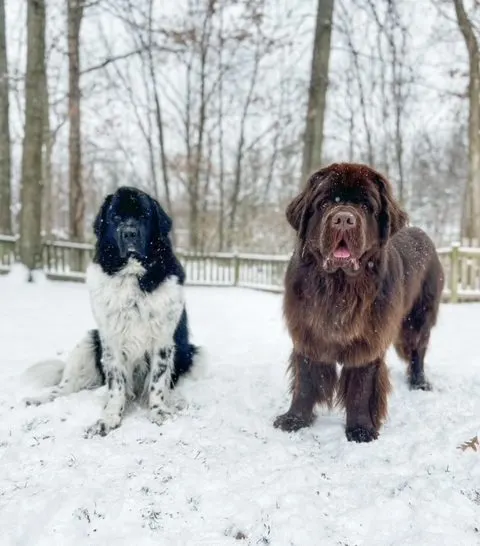
“Bring your pets inside!”
Well, Linda, I would if I could but they’ve turned up their selective hearing to the max and all I’m getting is blank stares into my soul when I tell them to come inside.
However, those who are embarking on their first winter with a Newfie might be a little concerned and rightfully so.
The media and animal rights activists have brainwashed people into thinking that dogs, no matter their breed, should never be outside in the winter.
Newfies are built differently than your average dog and are well cared for Newfies can definitely hang outside in a fresh pile of snow for more than a few minutes.
But, there’s always a but, some Newfies love it more than others.
Is it possible for the temperatures to be too cold for a Newfoundland?
Of course!
Let’s take a look at how cold is too cold for most Newfies.
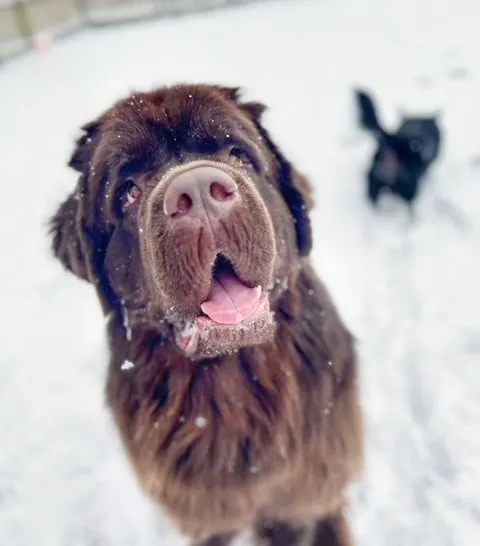
How Cold is Too Cold for a Newfoundland?
To be honest, the answer to that question isn’t as straightforward as you would think and it ultimately comes down to the individual dog and some basic common sense.
Newfoundlands are well known for their thick, water-resistant double coats and natural love for cold weather.
Originally bred as working dogs in harsh climates, they thrive in arctic conditions where many other dog breeds might struggle.
These dogs love the cold and most of them can tolerate super cold temperatures over their humans.
However, it’s important to keep in mind that even these gentle giants have their limits when it comes to the cold.
As responsible Newfie owners, it’s crucial to recognize signs that your Newfoundland might be feeling the chill and know how to keep them comfortable during winter.
Yes, Newfoundlands are a breed that is capable of tolerating cold temperatures but not all Newfies are created equal.
Healthy, adult dogs can tolerate the cold better than senior dogs and puppies so let’s look at some factors that can influence a Newf’s tolerance for cold and how to recognize if they might need to limit their time outside in frigid temperatures.
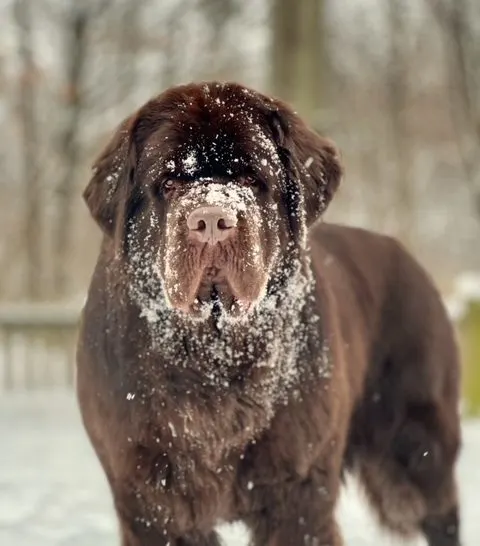
Coat Matters
One of the reasons that Newfies are able to tolerate cold temperatures is due to their thick double coat.
Newfies that have grown a full healthy coat can withstand wind chills better than dogs that have thinner coats.
Keep in mind that most Newfoundlands don’t have their full adult coat until they are 2-3 years old.
Newfoundlands are prone to skin issues.
If a Newfie has hot spots or some form of a skin infection, that is leaving their skin exposed, that area is at risk for frostbite in extreme temperatures.
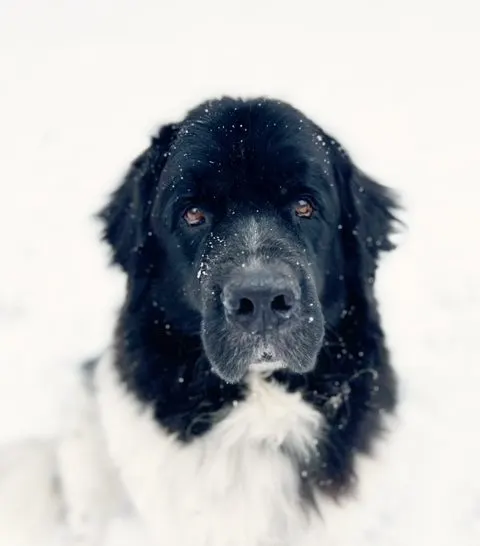
Bodyweight Matters
Body fat is a good insulator for a dog’s body.
A thinner dog will normally get colder than a thicker dog but don’t try to pack on the pounds just to keep your dog warm!
The added weight to a Newfie can be dangerous to their joints!
If you’re ever questioning a dog’s condition you can always check this Body Condition Score Chart For Dogs.
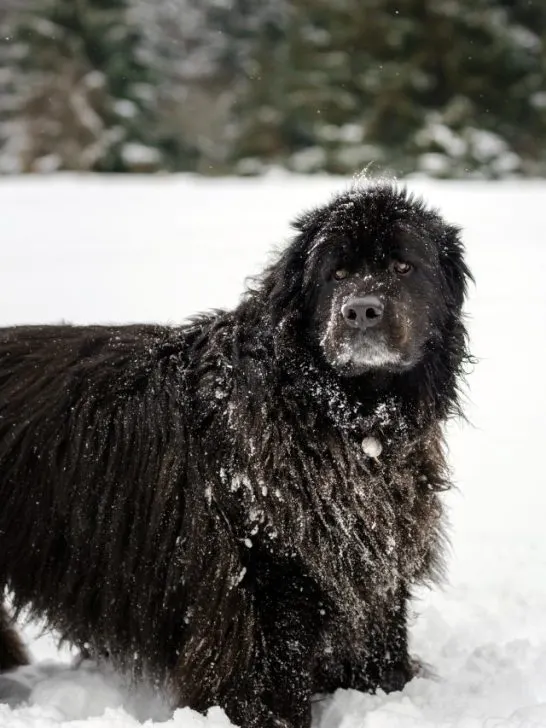
Environmental Factors Matter
Not all cold temperatures are equal.
Windchill, dampness, and sunlight can impact the conditions outside despite what the thermometer reads.
Check out this Windchill chart for humans
If a west coast dog that is not used to cold weather travels up to the east coast during the winter, they might be a little chilly at first because they are used to much warmer conditions.
Their body needs time to adjust and once that happens they should do fine but it’s always recommended to monitor them.
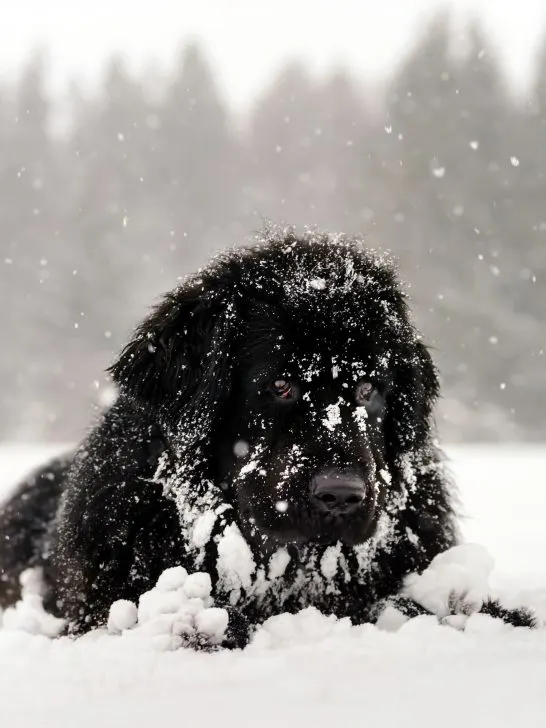
Shelters and fresh water should be provided.
Dogs that have the proper shelter outside can stay out in colder weather longer than dogs that do not.
Freshwater that is not frozen should be available to all dogs spending any time outside.
You can purchase heated water bowls and/or heated water buckets.
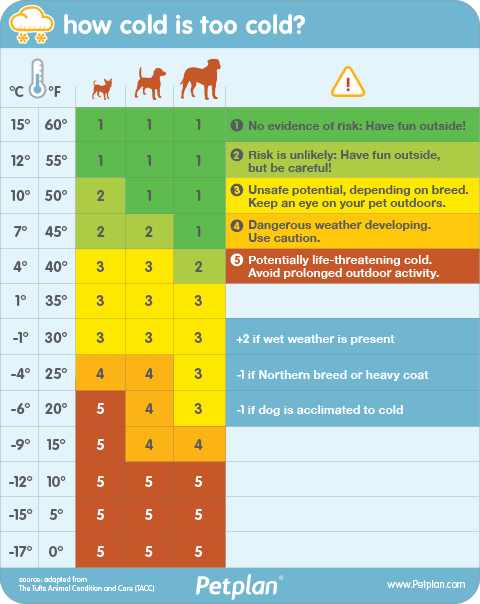
If You’re Cold, They’re Cold.
For some dogs, yes but that is probably not the case with most of the Newfie population.
While Newfoundlands can get cold, most of them can withstand the cold better than humans can.
Check their coat.
Newfies have a water-resistant, double coat, the guard hair will get wet but most often the undercoat will stay dry.
You can easily part the hair and check if the undercoat is wet.
Touch the skin while you’re there and if it’s cold and wet then they should come inside to dry off.
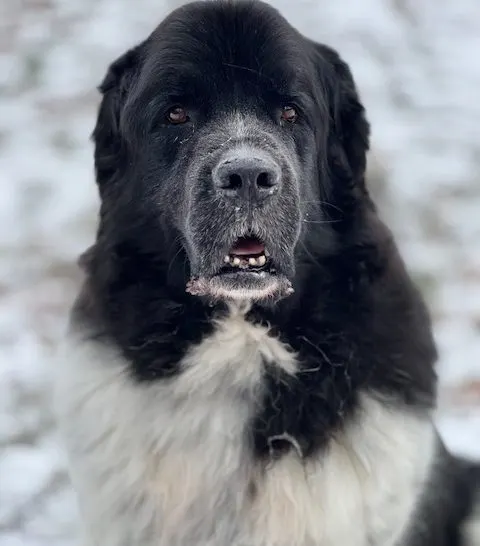
There’s a Difference Between Being Allowed To Stay Outside and Leaving a Dog Outside
I think a huge factor that many people miss when it comes to dogs being outside in the winter is allowing your dog to stay outside and leaving a dog outside.
We allow our Newfies to stay outside in the cold because they like it but the option to come inside is always there.
They aren’t left outside with the door closed and the lights off.
We don’t forget about them outside and we are often begging them to come inside.
Most Newfie owners aren’t abandoning their Newfies out in the backyard snow drift, they are allowing them to be out there because the other option is to somehow force them inside.
For some of us, that means renting a forklift!
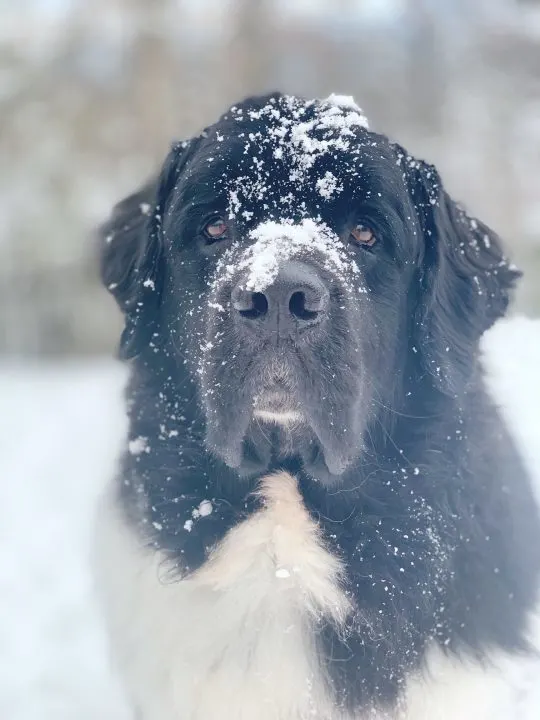
How to Tell If Your Newfoundland Is Too Cold
All of my Newfies have been pretty good about keeping in touch with their environments and their bodies.
While most Newfoundlands can tolerate temperatures as low as 20°F (-6°C), extreme cold combined with wet or windy conditions can still pose risks.
Here are some common signs that I watch for to see if my dogs are cold:
- Shivering, shaking, or trembling
- Limping
- Teeth chattering
- Ears pinned back, tail tucked or hunching
- Being anxious or nervous
- Lifting their paws
- Barking or whining
- Seeking shelter (standing at the door to come inside)
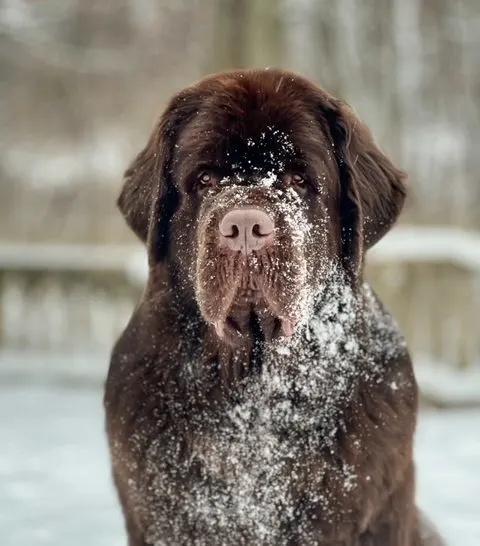
Normally when a dog is cold it will start to shiver, act anxious or unsettled, whine or bark, slow down or seek shelter next to a house or other permanent structure.
Some will also start to lift one or more of their paws due to snowballs or ice forming.
These should be removed carefully to not irritate the dog’s paw.
The wind strength is normally what has drawn my Newfies into the house, not the temperature on the thermometer.
If you really want to keep track of how cold your dog is, you can invest in a no-touch dog thermometer that is designed to read your dog’s body temperature.
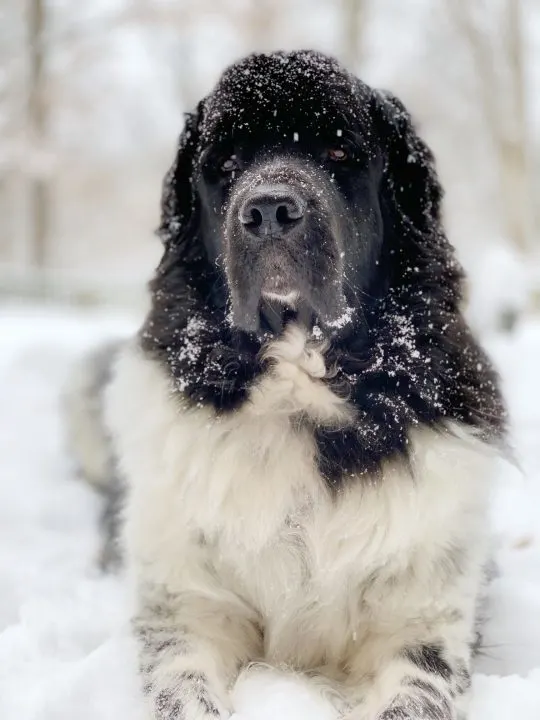
Signs Of Frostbite In Dogs
Any dog, including Newfoundlands, that spends a lot of time outside can be at risk of getting frostbite.
Common signs of frostbite in dogs are:
- discoloration of the skin (think pale, grey, blue and even red)
- skin that is cold to the touch and hard
- ulcers or blisters
- skin that is painful to touch
- blackened skin in the later stages of frostbite
Frostbite normally occurs on a dog’s nose, paws, ears, and genitals and it can take a few days for it to appear.
Dogs that have health problems such as heart disease or diabetes have a greater risk of getting frostbite.
If you suspect that your dog has frostbite you could contact your veterinarian.
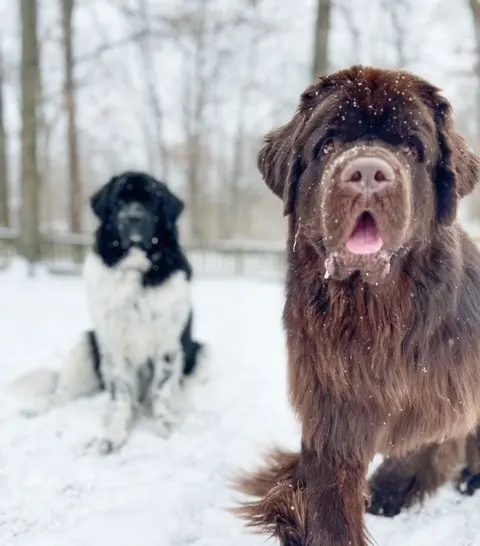
Not All Newfies Are Created Equal
Some senior Newfies that have lost muscle mass and weight may not be able to regulate their body temperature as well as they used to so they should be monitored while outside in cold temperatures.
Dogs that are having joint or mobility issues should be monitored so that they don’t slip on ice, so they don’t get stuck walking in high, heavy snow and to make sure they are able to get up and move.
Puppies that don’t have their full coat should be monitored.
Any dog that is suffering from respiratory distress or dogs that are not in good health should be monitored in cold weather.
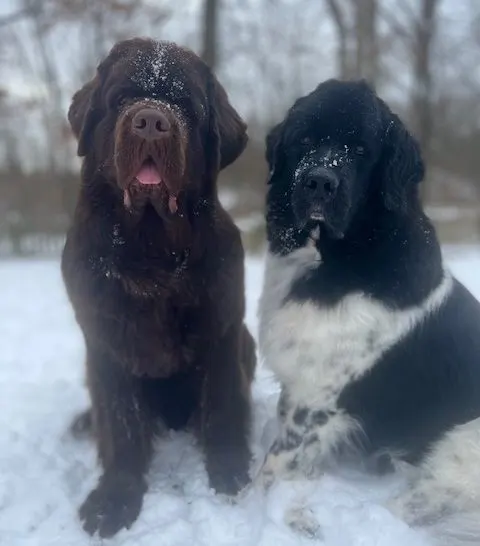
My Brown Newfies is a participant in the Amazon Services LLC Associates Program, an affiliate advertising program designed to provide a means for sites to earn advertising fees by advertising and linking to Amazon.com
How to Keep Your Newf Cool Inside During the Winter.
Some Newfs owners have expressed concern that when their Newf is inside in the winter that they seem hot and that is probably true.
A few ways you can help keep them cool is to have a ceiling or box fan available to them, leave a window open or keep their cooling pad out all year round.
Lou likes to lie next to our sliding door in the winter because there’s a draft.
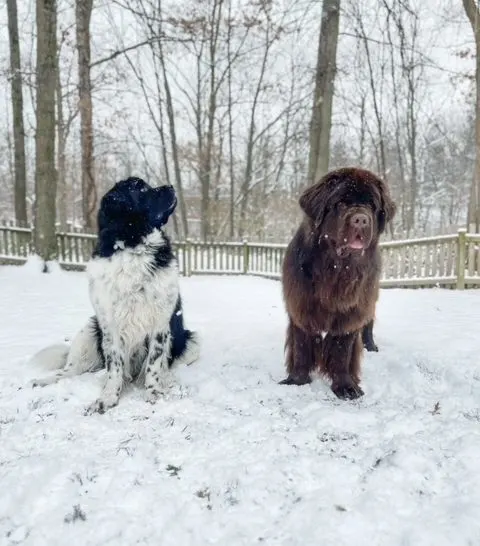
Don’t Sweat It!
As Newfie owners, this is a challenging time of year for many of us, mostly because we struggle to get our dogs inside the warm house but once you understand the cold tolerance of your specific dog, you’ll be good and so will your Newf.
We have to remember that we have a unique breed that the average person does not understand.
When someone on the internet comments about any of my dogs being cold, instead of being a smart ass back to them, I’ve been trying to educate them on the breed.
You know, spread the love not the hate.
In conclusion, there’s no number that anyone can give you as to what is too cold for a Newfoundland.
Individual results vary and common sense needs to be used.
We don’t support any dog being left outside in cold temperatures that aren’t given the choice to come inside when needed.
Clifford Slater
Monday 15th of January 2024
My 7 year old Newfie, BJ, just loves lying out in the snow at minus30C as if he were on a beach in Florida and will generally only come inside after some treat bribery. It has to get below minus 35 or so before he’s ready to come in of his own accord. A few of your picture depict him perfectly,
Hershey's Daddy
Saturday 12th of December 2020
It typically doesn't get real cold here in Texas but I worry my guy will get cold when it's like 40* outside.
Every time I check on him, he rolls over and he's warm to the touch. I'll let him go out as often as he wants but have to physically drag him in by his harness sometimes.
Dr. David Giltrow
Friday 27th of December 2019
We had three Newfies over 25 years living in Santa Fe at 7,200 feet. Biggest concern in the winter were their paws picking up snow which would pack in and become ice. Being avid followers of the Alaskan Ididarod, we tried booties and also Mushers' Salve, Both worked OK for short, 20 minute walks in a couple parks nearby, but only when the snow was dry powder which didn't pack in like wet snow which forced their toes to spread out. One dog tolerated the booties, the other two varied in keeping them on their paws. The salve would wear off after about 25 minutes except under light, fluffy snow conditions. As for cold temperatures, none of them seemed to mind temperatures until about 15-20 deg. F. # The breeder of our middle Newfie was living on top of a 9,000 ft. mountain in Golden, CO, overlooking Denver. She tells of having four dog houses of a size suitable for adult Newfies, two for their dogs and two others being boarded. Typically she put them in their respective dog houses each night. Because it was a -30 deg. F night, she went out at midnight to check on them. They had all gathered in one of the dog's houses and she concluded they had solved their own problem of making it through the exceptionally cold night.
Matt
Tuesday 3rd of December 2019
I think a lot of new dog owners think that just because their dog has fur, they are warm. My dog would whine if he was too cold but he couldn't help himself, he loved being out in the snow. The big thing is to limit their time in the cold and play with them indoors. Great post!
Autumn Kissler
Wednesday 30th of October 2019
Thank you for sharing your opinion and experience. These dogs are amazing!